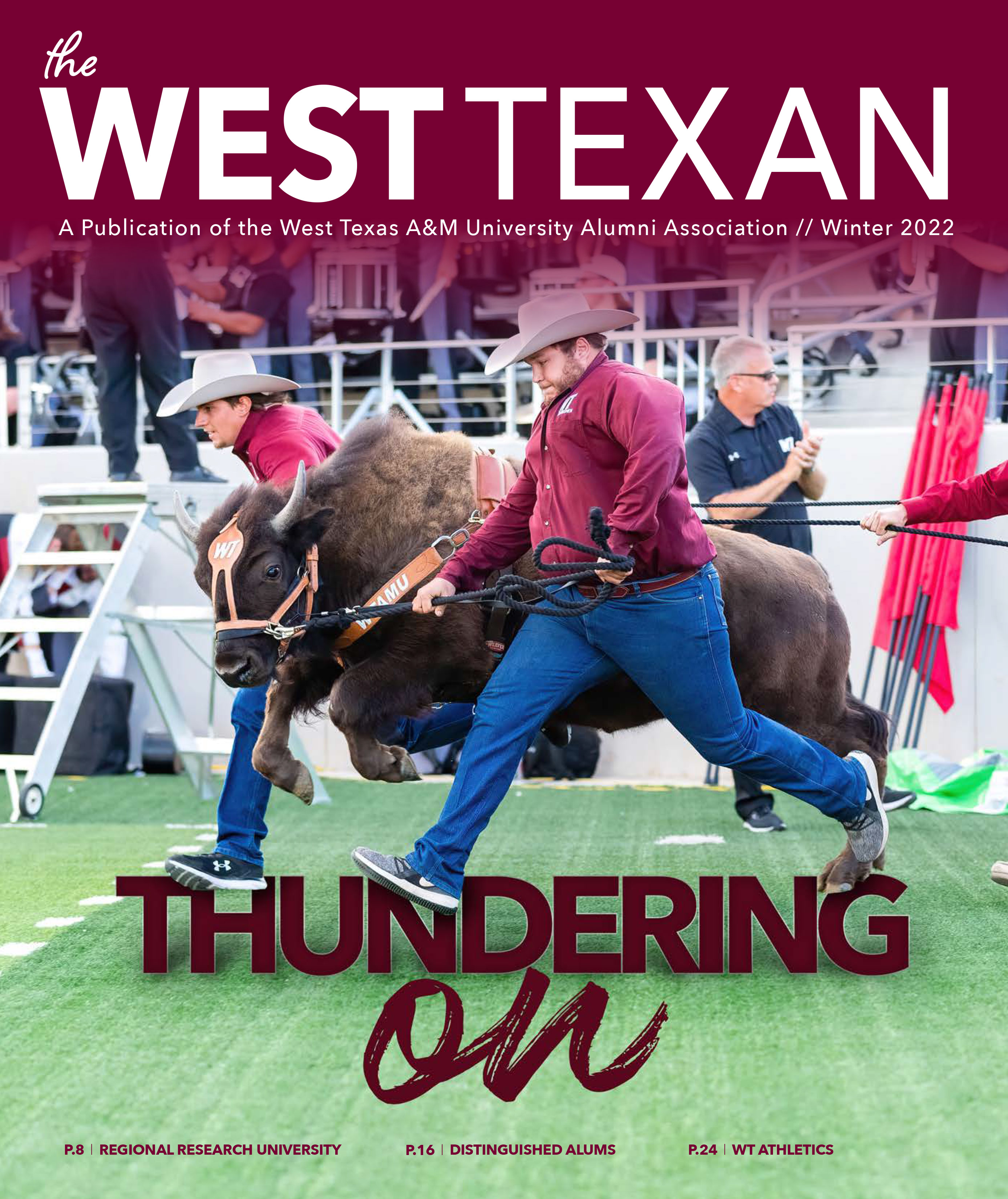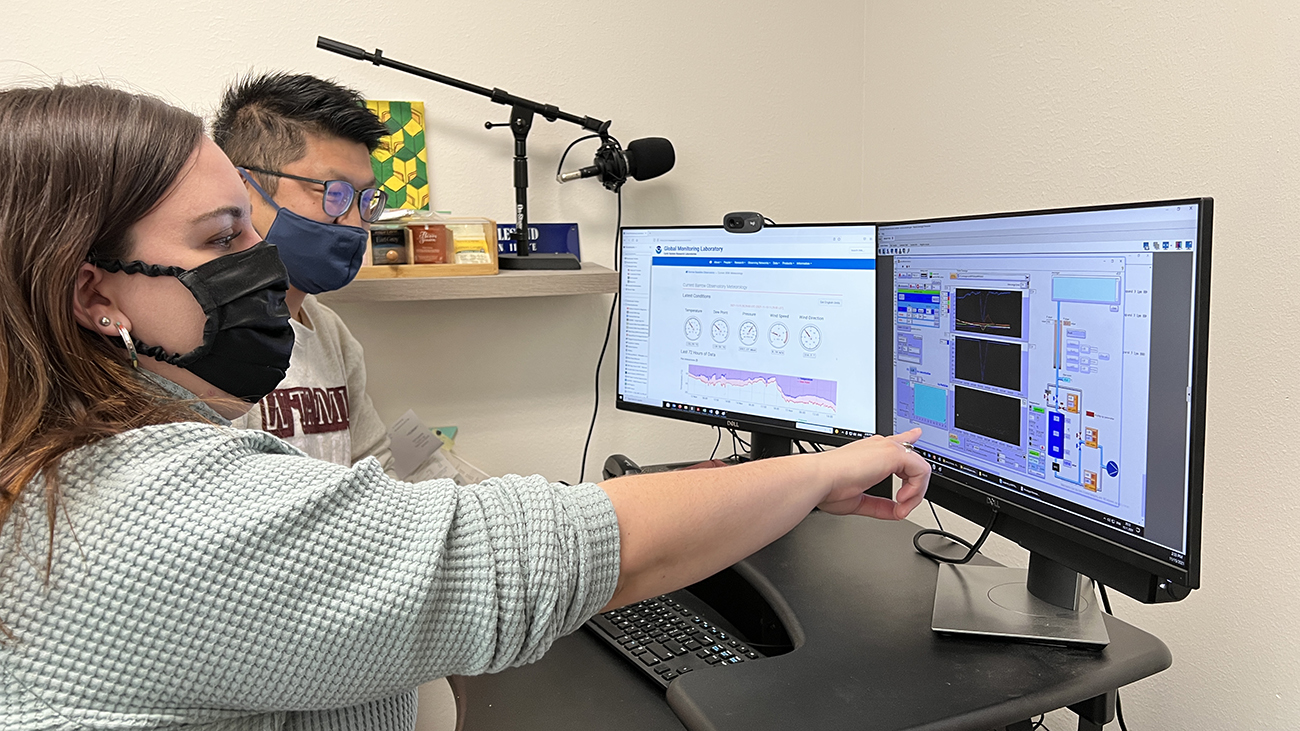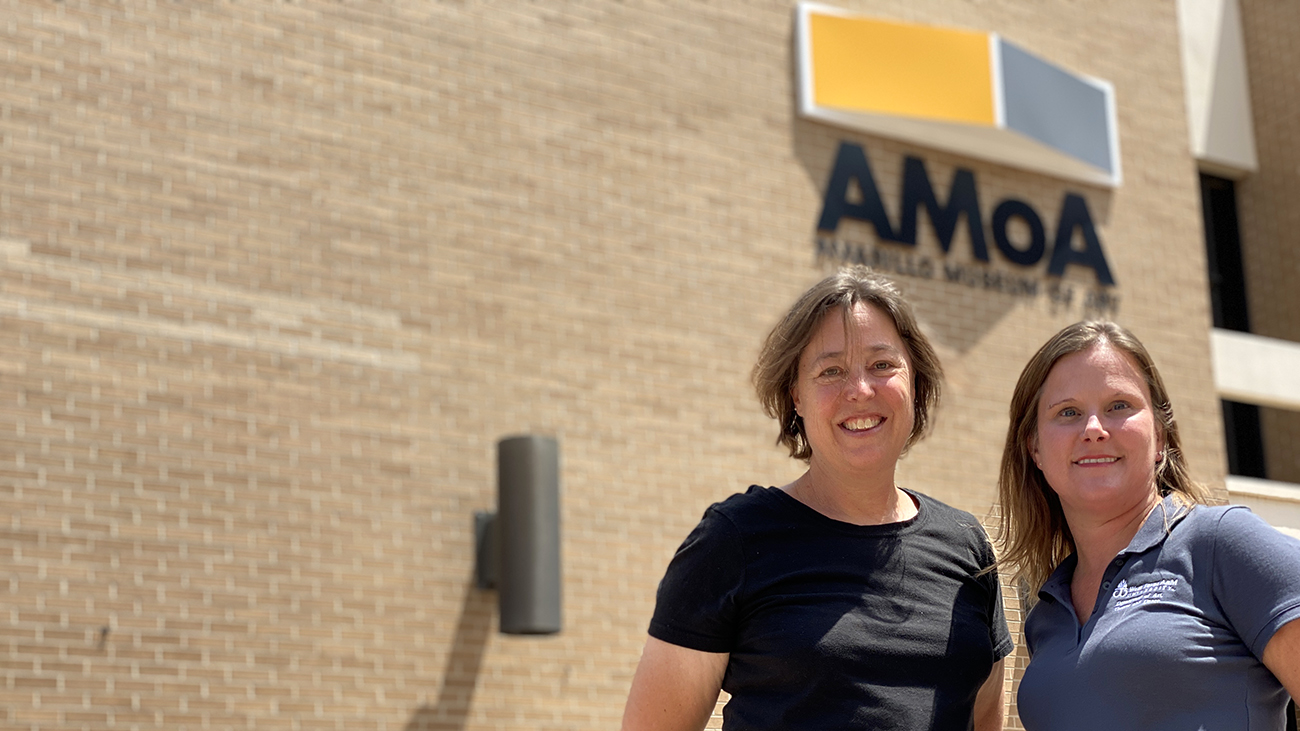- Graduate
- Business
- Health Sciences
- Community
- Education
- Nursing
- Arts
- Science
- Engineering
- Agriculture
- Communication
- EPML
- Research
- Featured
The West Texan: What It Means to Be a Regional Research University

This article appears in the Winter 2022 edition of The West Texan. Click the image to read the full issue.
Every day, students, faculty and staff across West Texas A&M University are searching for solutions to problems facing not only the Panhandle community, but also those gripping similar regions around the world.
They’re fulfilling the singular goal of the University’s long-range plan, WT 125: From the Panhandle to the World , which is to cement WT as a Regional Research University.
But what, exactly, is a Regional Research University?
“Simply put, the overall purpose of a regional research university is to serve regional students and regional needs first, believing that if the institution can’t serve locally first, it will serve nowhere well,” WT President Walter V. Wendler said. “This focus does not limit a Regional Research University’s worldwide reach; instead, it reaffirms through transferability, that by focusing first on the region, the needs of similar regions across the nation and world will benefit from its attention, research and resolution of the challenges and opportunities that characterize the region.”
That’s precisely what the College of Engineering did when it developed Copper Clean. The Buffalo Technology Group—led by the College’s dean, Dr. Emily Hunt—developed a copper alloy that wipes out viruses and bacteria. It’s easy to see how that’s applicable not only to the Panhandle, but to people around the globe.
The fragility of the Ogallala Aquifer is similar to other water supplies around the world. When Hannah Tripp ’21, who recently earned her master’s in environmental science, learned at WT how satellite imagery could be used to measure playa lakes on a weekly basis, rather than annually, she realized that other scientists could take that data and gain new insight into the lakes, which not only refuel aquifers but also sustain a number of species.

Photo: Drs. Elise Wilbourn, left, and Naruki Hiranuma examine data being gathered at a Portable Ice Nucleation Experiment (PINE) chamber near Utqiaġvik, Alaska.
Dr. Vinu Unnikrishnan, an assistant professor of civil engineering, has been awarded several patents for silicone-based tissue that acts the same way as human tissue, which can help researchers develop shoe insoles for diabetic patients, personal protective equipment and wearable electronic devices, including prosthetics.
WT’s Beef Carcass Research Center, established in 1992, provides an invaluable repository of data for pharmaceutical companies, feedlot research trials, university research trials, seedstock producers and other entities. And the Nance Ranch, donated to WT in 1971, provides a variety of unique resources and educational experiences on a working ranch, as will the recently gifted Gerdsen Ranch.
But research isn’t limited to hard sciences. Valuable work also is being done by University representatives in an array of fields.

Photo: Drs. Bonnie Roos, from left, and Amy Von Lintel published “Three Women Artists: Expanding Abstract Expressionism in the American West."
Dr. Amy Von Lintel , a WT professor of art history and director of gender studies, and Dr. Bonnie Roos, professor of English and department head for English, Philosophy and Modern Languages, recently published “Three Women Artists: Expanding Abstract Expressionism in the American West,” which argues that not only did women play a significant role in the development of the pivotal American art movement of abstract expressionism, but so did collectors in the Texas Panhandle.
Dr. Timothy Bowman, head of the Department of History, recently published “You Will Never Be One of Us: A Teacher, a Texas Town and the Rural Roots of Radical Conservatism,” a balanced examination of how conservatism in the Panhandle in the 1970s was a precursor to political battles being waged today.
And it’s not just faculty members and graduate students who are tackling worldwide problems.
McNair Scholars like Aurora Garcia-Comer '22, a Borger native who earned a bachelor's in biology, are already making significant progress in areas of critical need. Garcia-Comer studied two types of epoxy resins, looking for viable substitutions for petroleum-based materials, which could help slow the depletion of petroleum and take advantage of renewable sources.
“Research provides new directions and solutions for current problems, increases attention and sensitivity toward complex issues, gives voice to our communities, removes barriers, creates new products and processes, and has the power to propel humanity forward,” said Dr. Angela Spaulding, vice president for research and compliance and dean of the WT Graduate School .
Making a Difference
Research activity can be found all across WT. Here are some additional projects taking place:
Dr. Ming Xie and Dr. Li Chen won a FEMA grant to investigate refugees’ needs and obstacles during emergencies. Xie is an assistant professor of emergency management administration in the Department of Political Science and Criminal Justice in the Terry B. Rogers College of Education and Social Sciences , and Chen is an associate professor of media communication in the Department of Communication in the Sybil B. Harrington College of Fine Arts and Humanities .
Dr. Minseok Yang and Dr. Janet Hindman, both of the Terry B. Rogers College of Education and Social Sciences, are researching how labor market issues impact student outcomes in rural schools.
Zeth Collom, an instructor and speech-language pathologist in the Department of Communication Disorders in the College of Nursing and Health Sciences , is looking into vocal fatigue in public school teachers. He plans to develop a program to provide local school districts with preventative voice training.
For the Center for Learning Disabilities , Dr. Michelle Simmons is researching educational assessment of children with special needs, as well as special educator preparation program practices, among other topics.
In the Paul and Virginia Engler College of Business , Dr. Leslie Ramos Salazar, the Abdullat Professor of Business, and Dr. Jillian Yarbrough, clinical assistant and the Virginia Engler Professor of Business, are currently examining the motivating factors of practicing workplace spirituality and the positive effects of workplace spirituality among employees and organizations in the Texas Panhandle.
